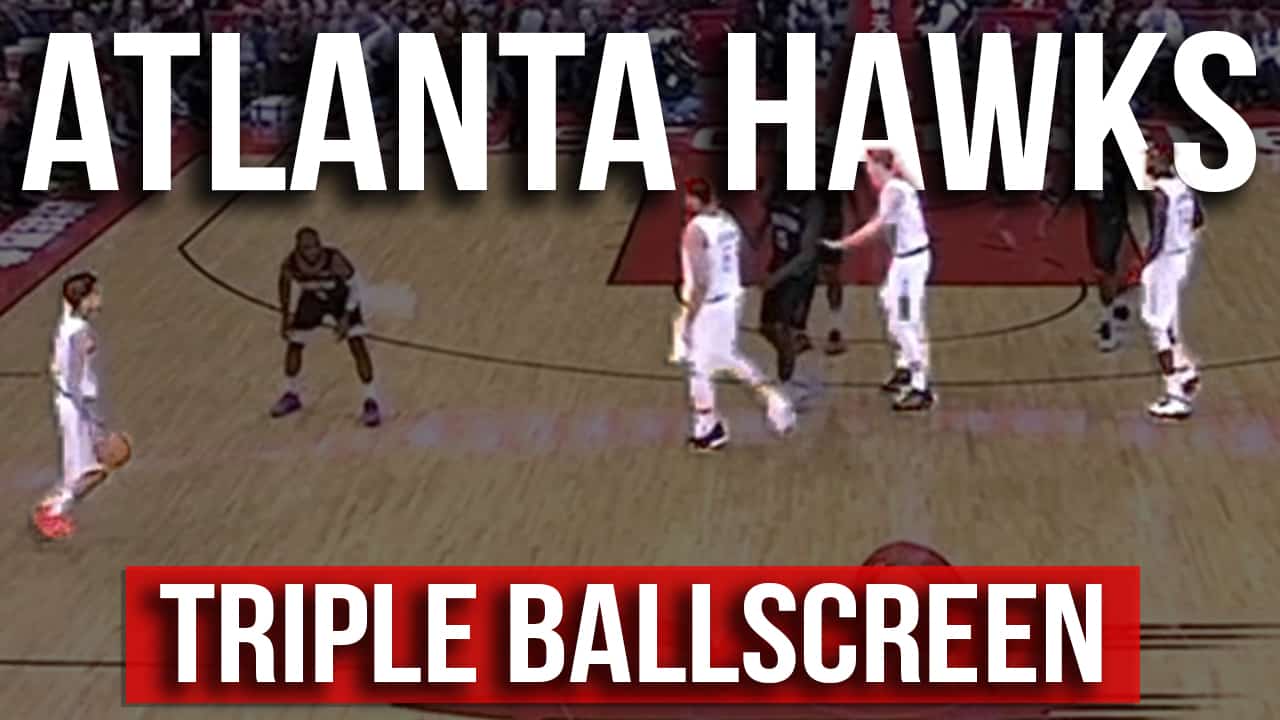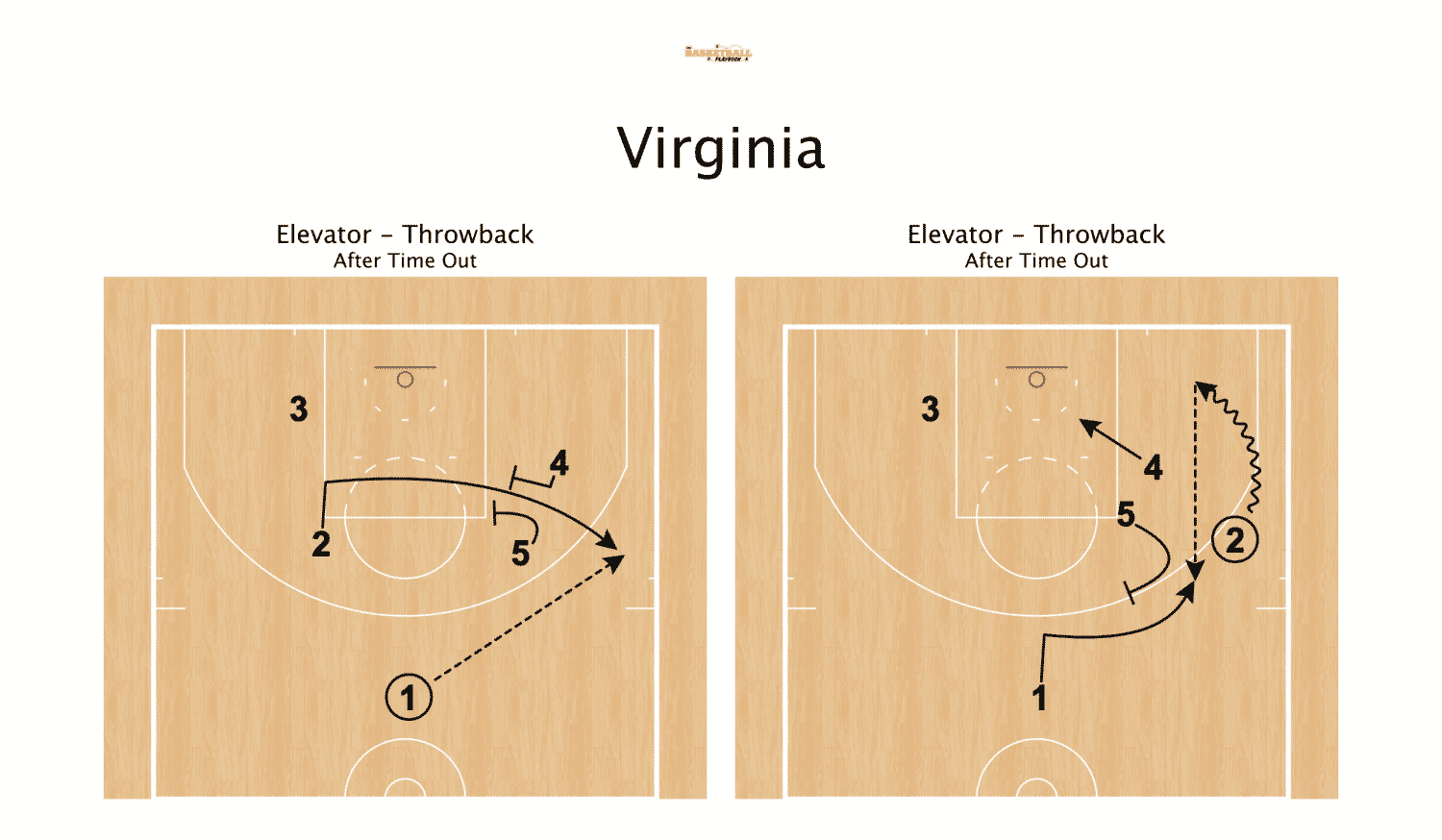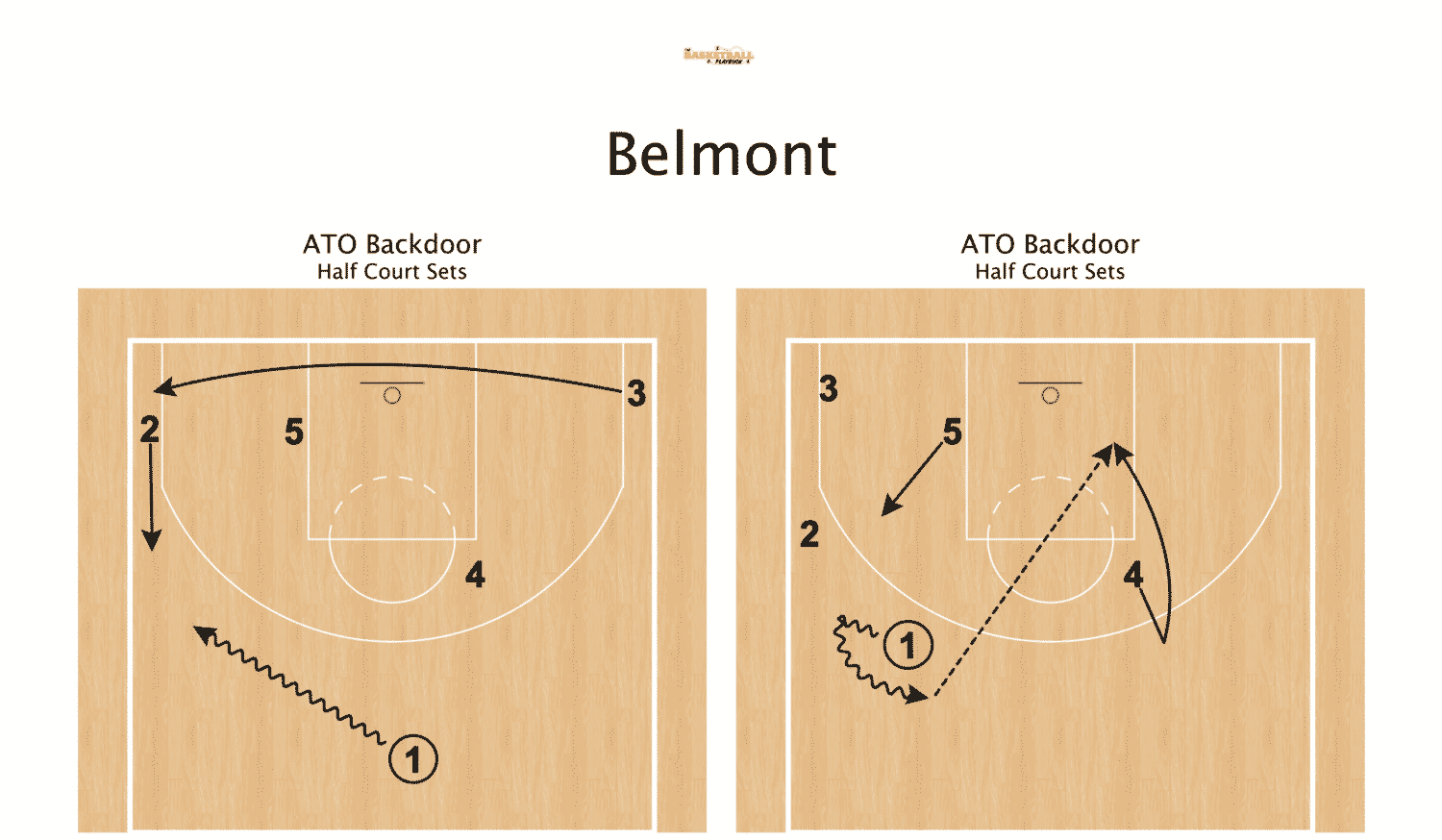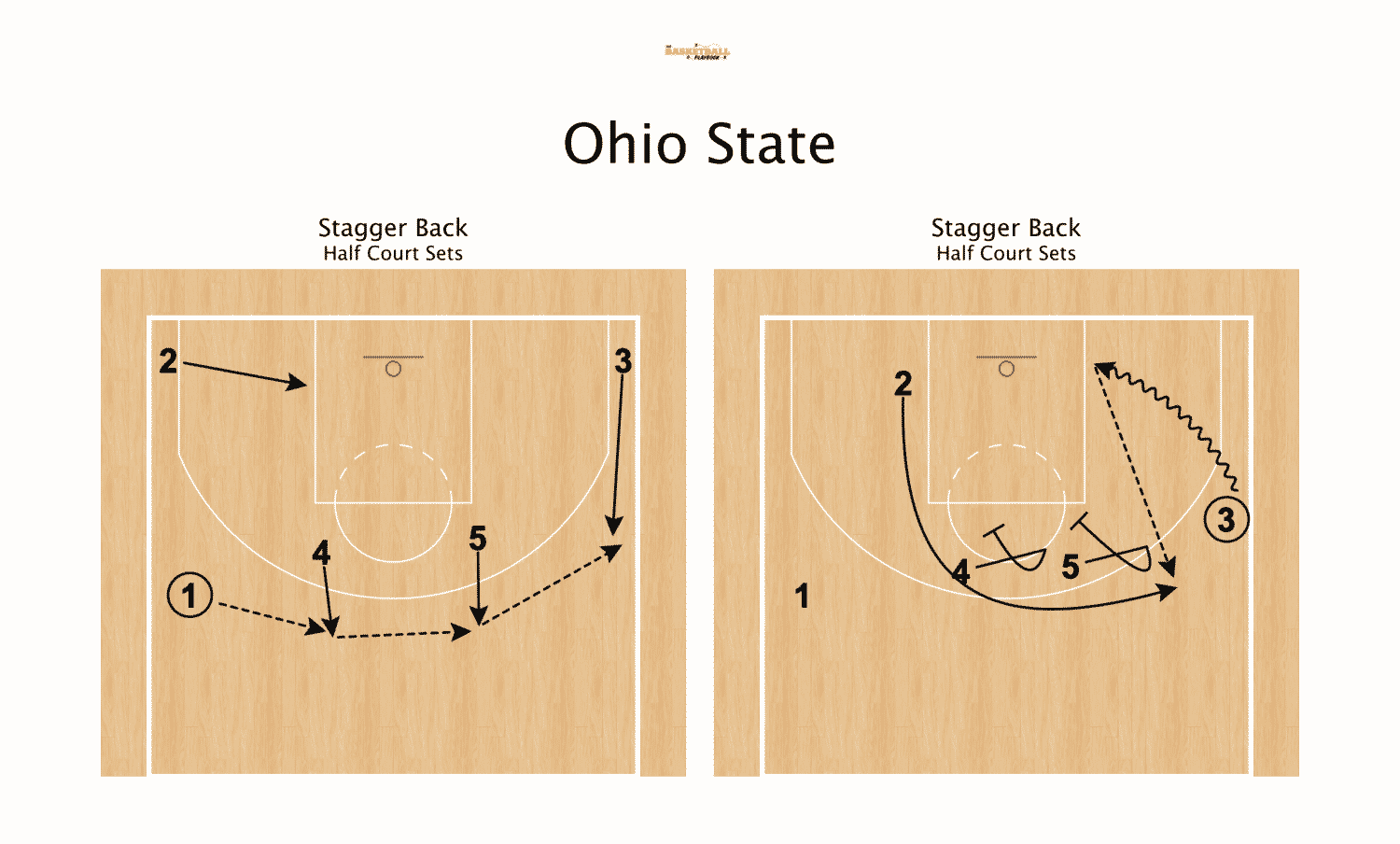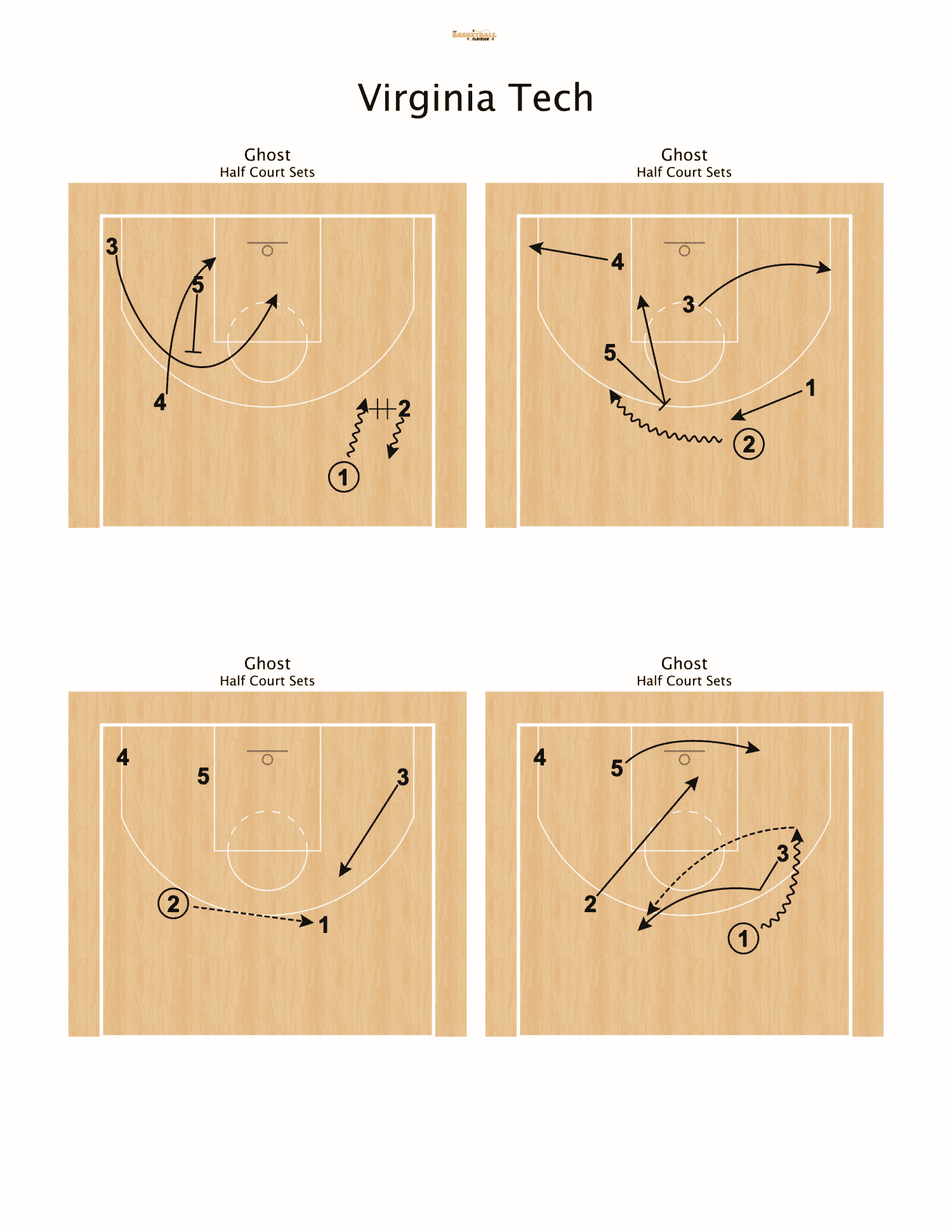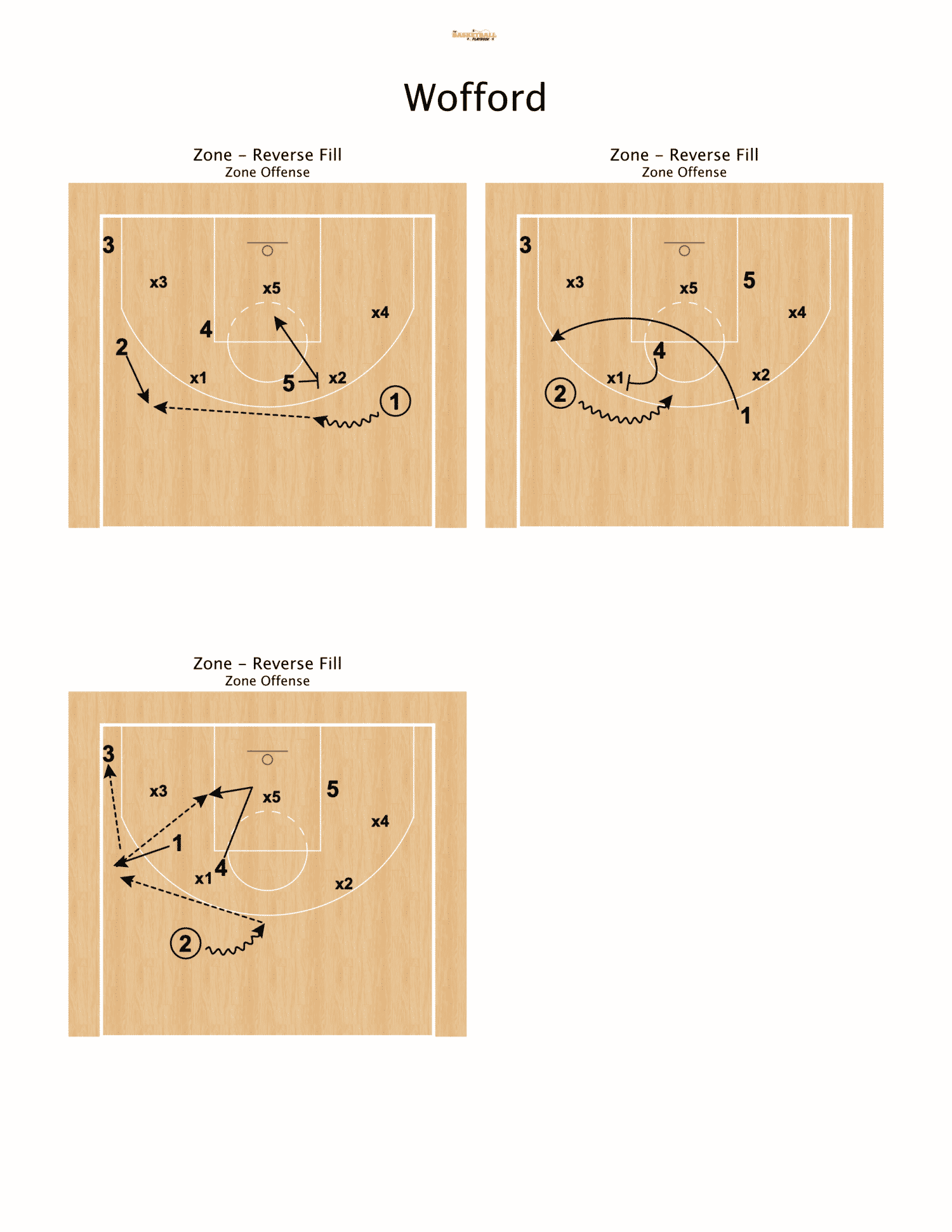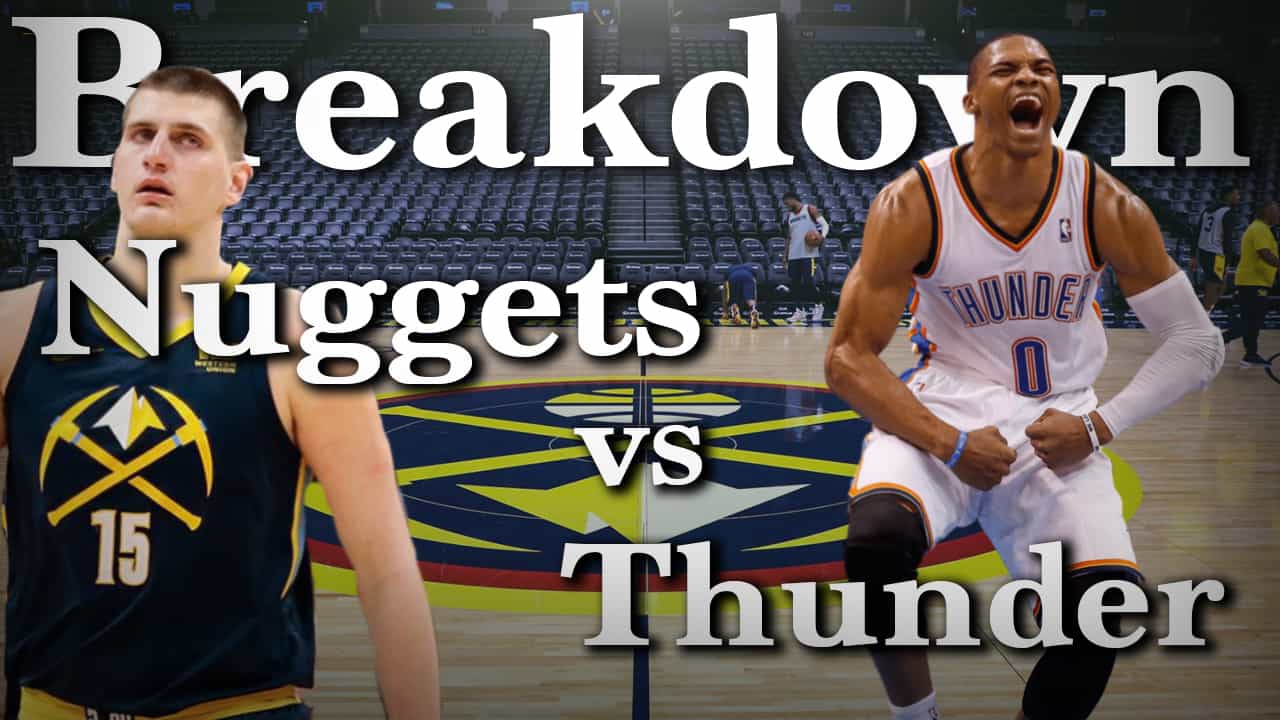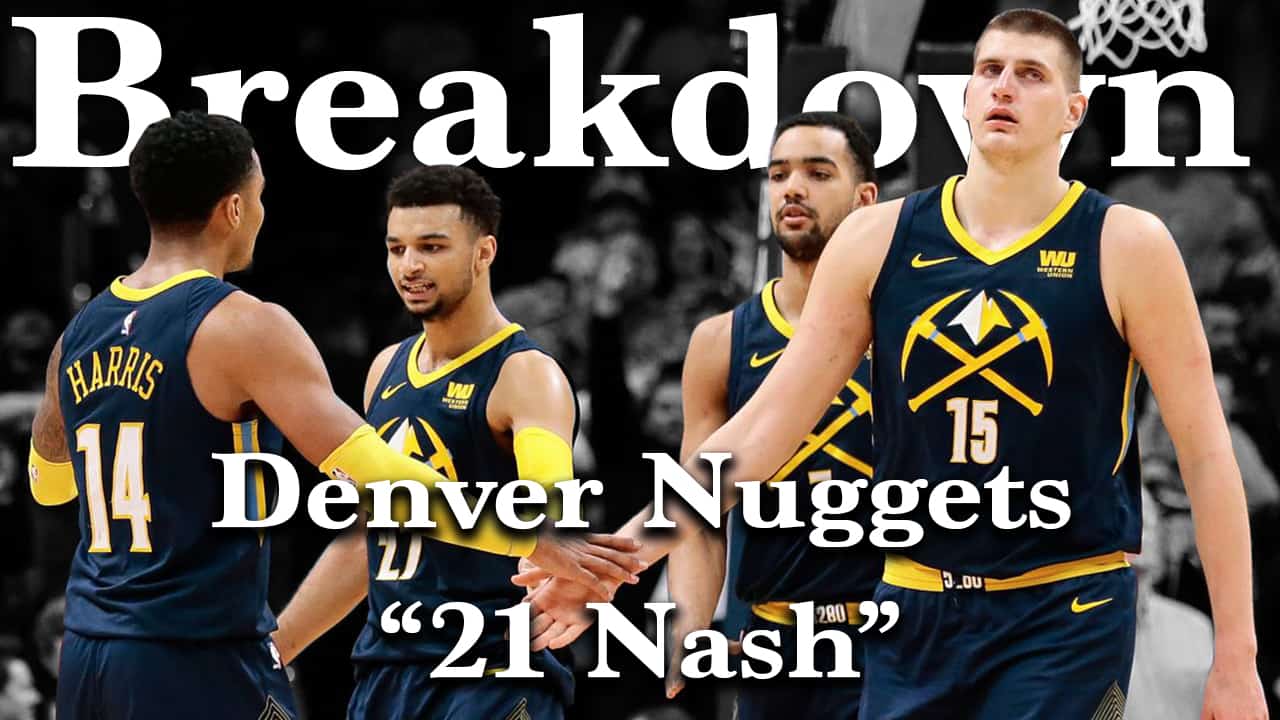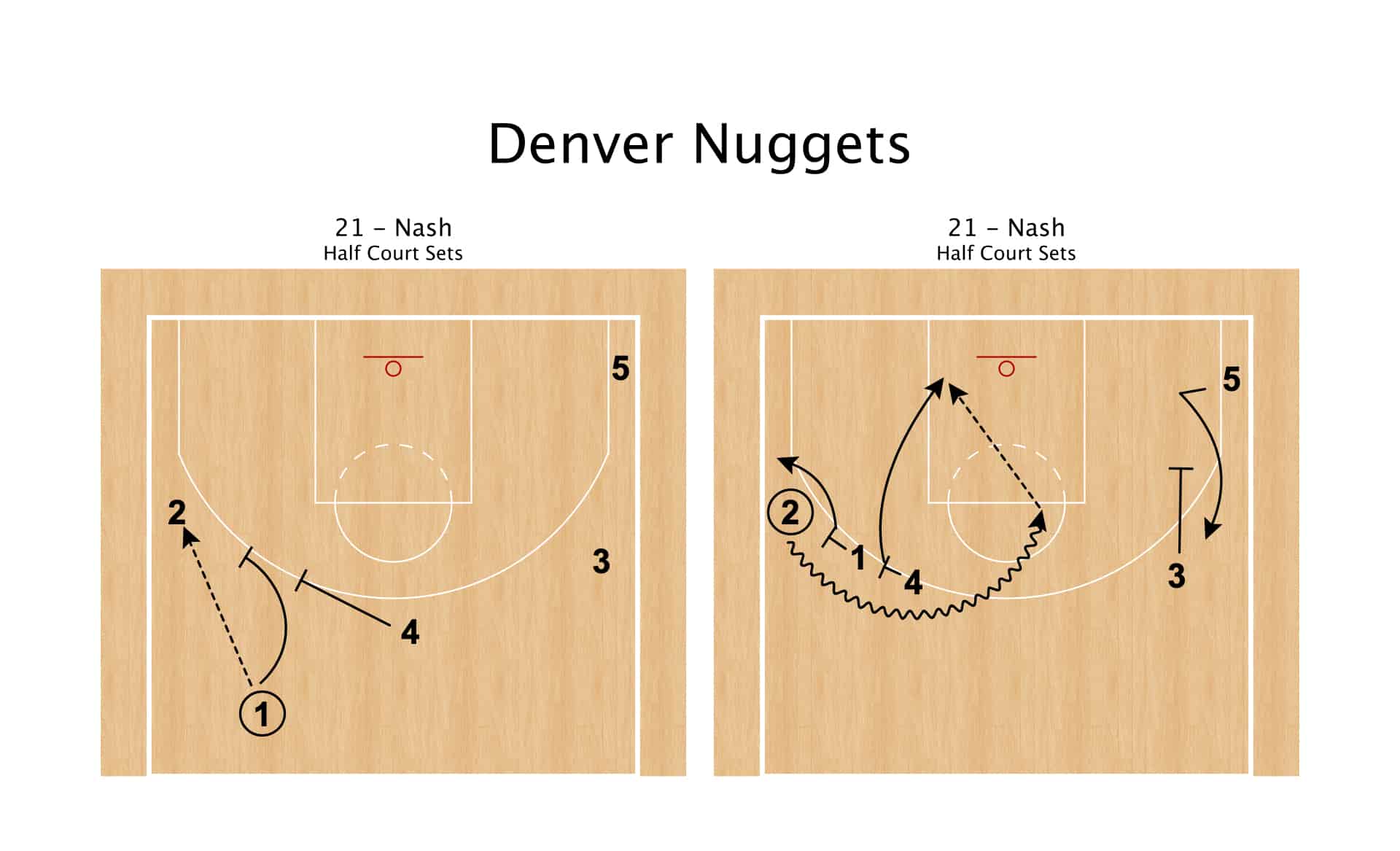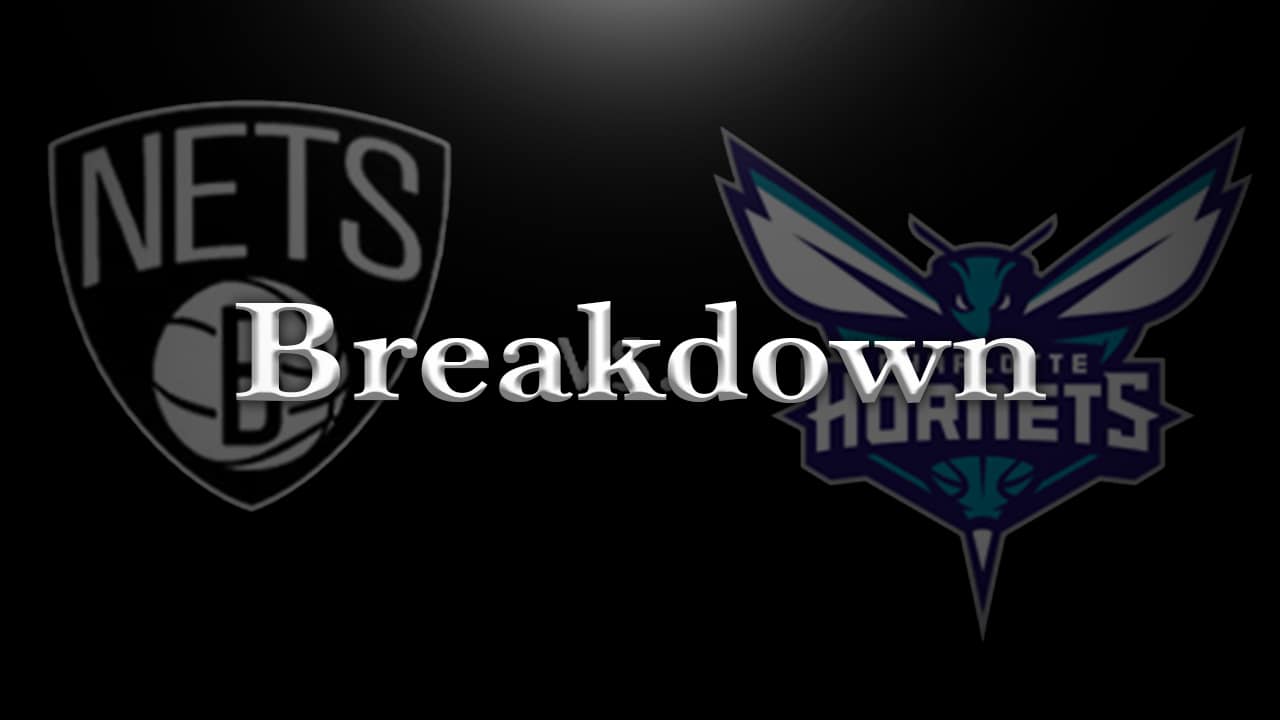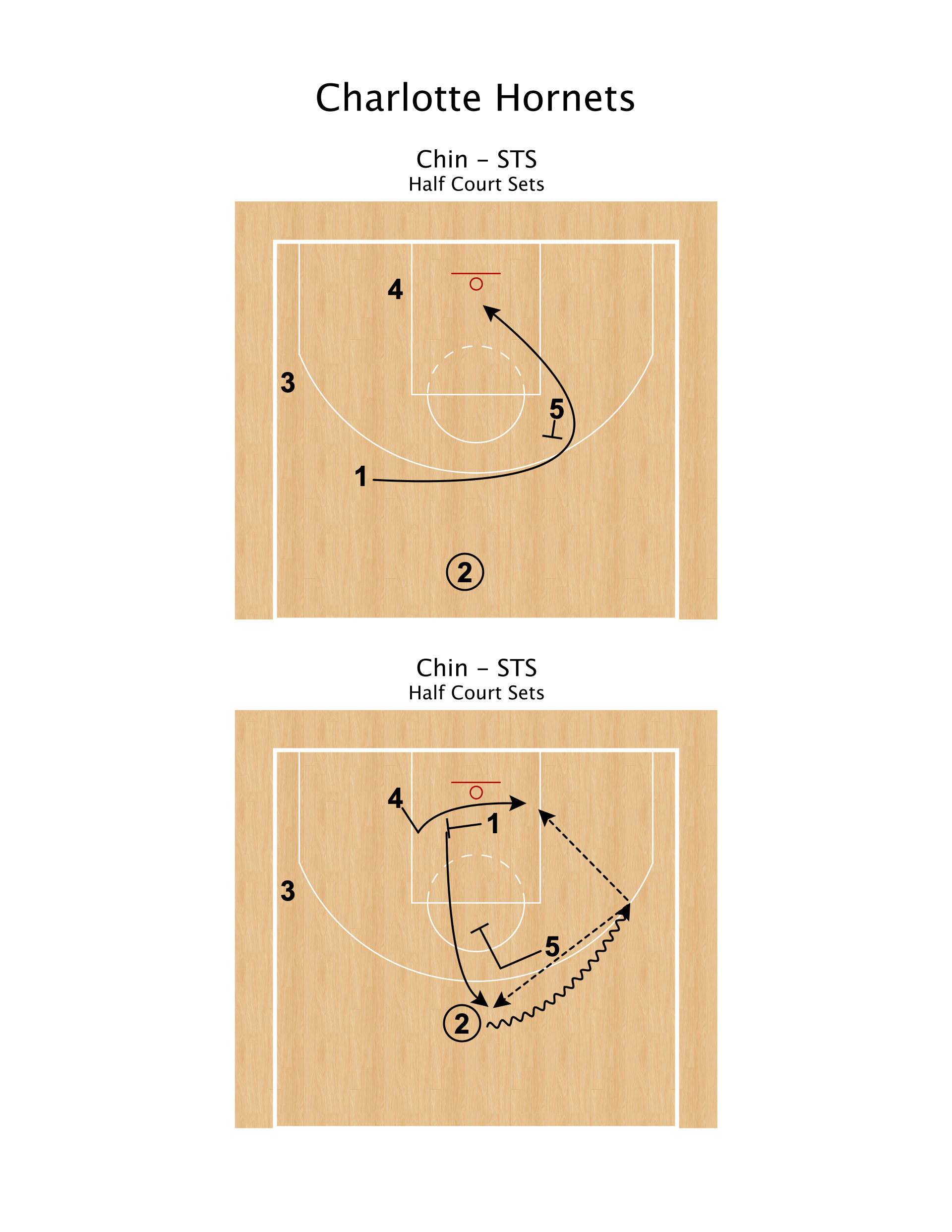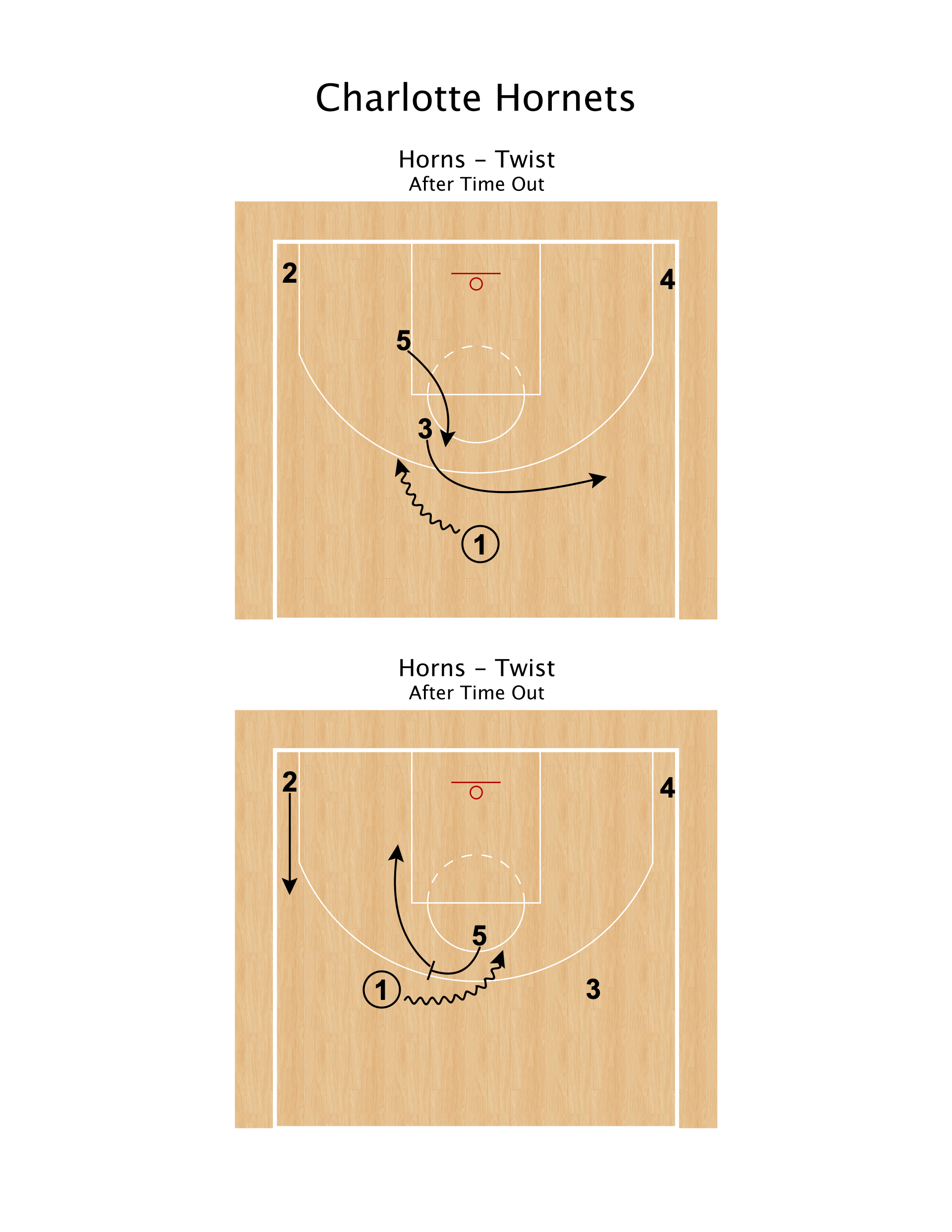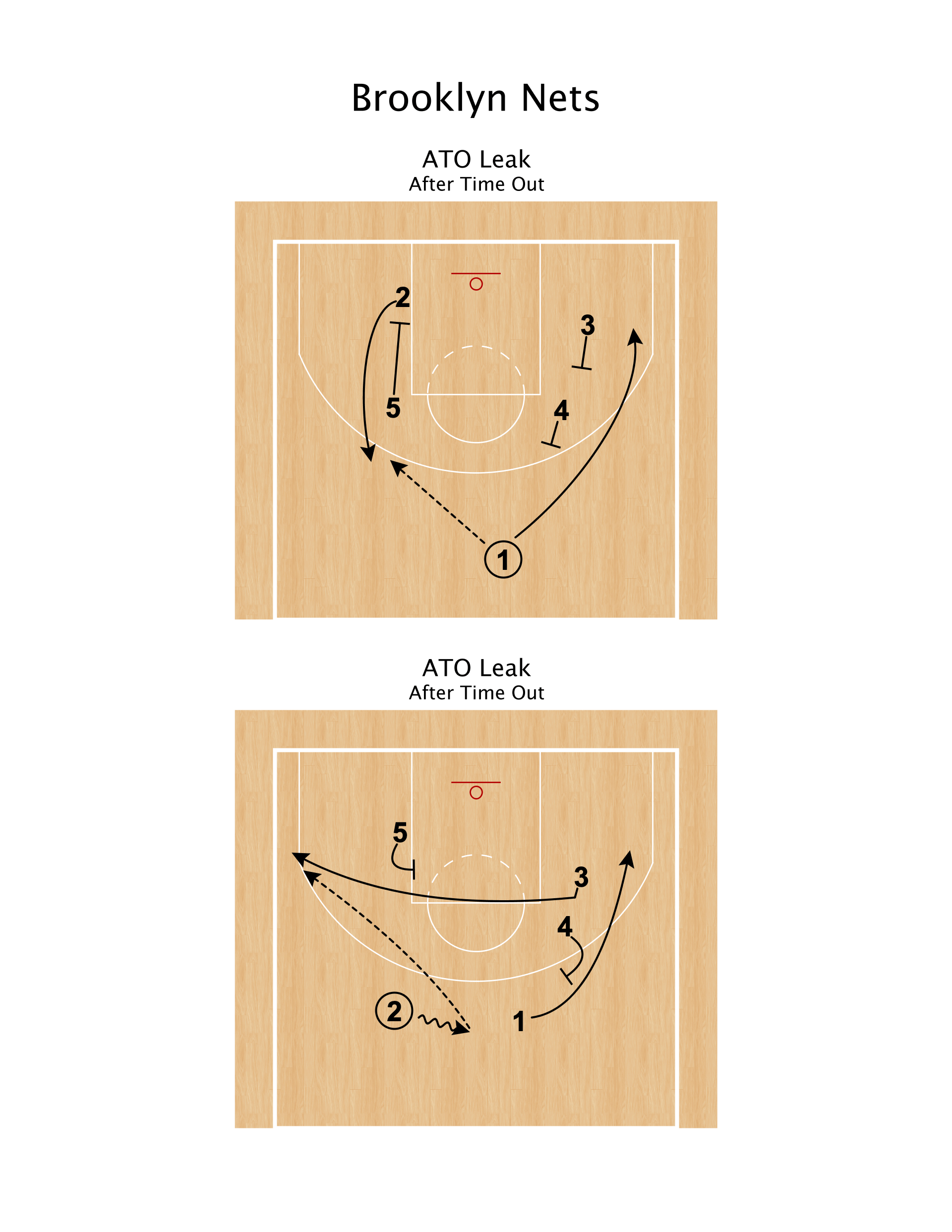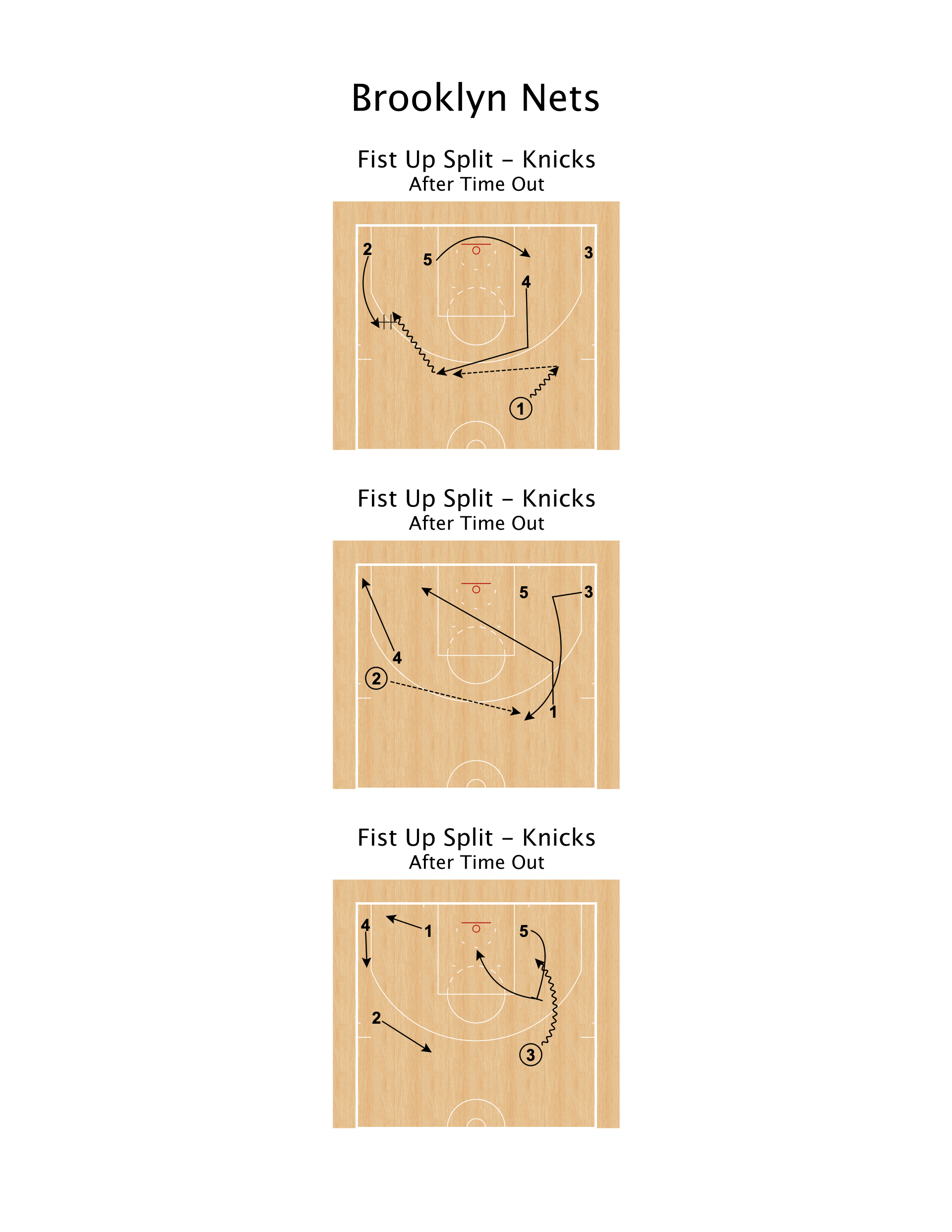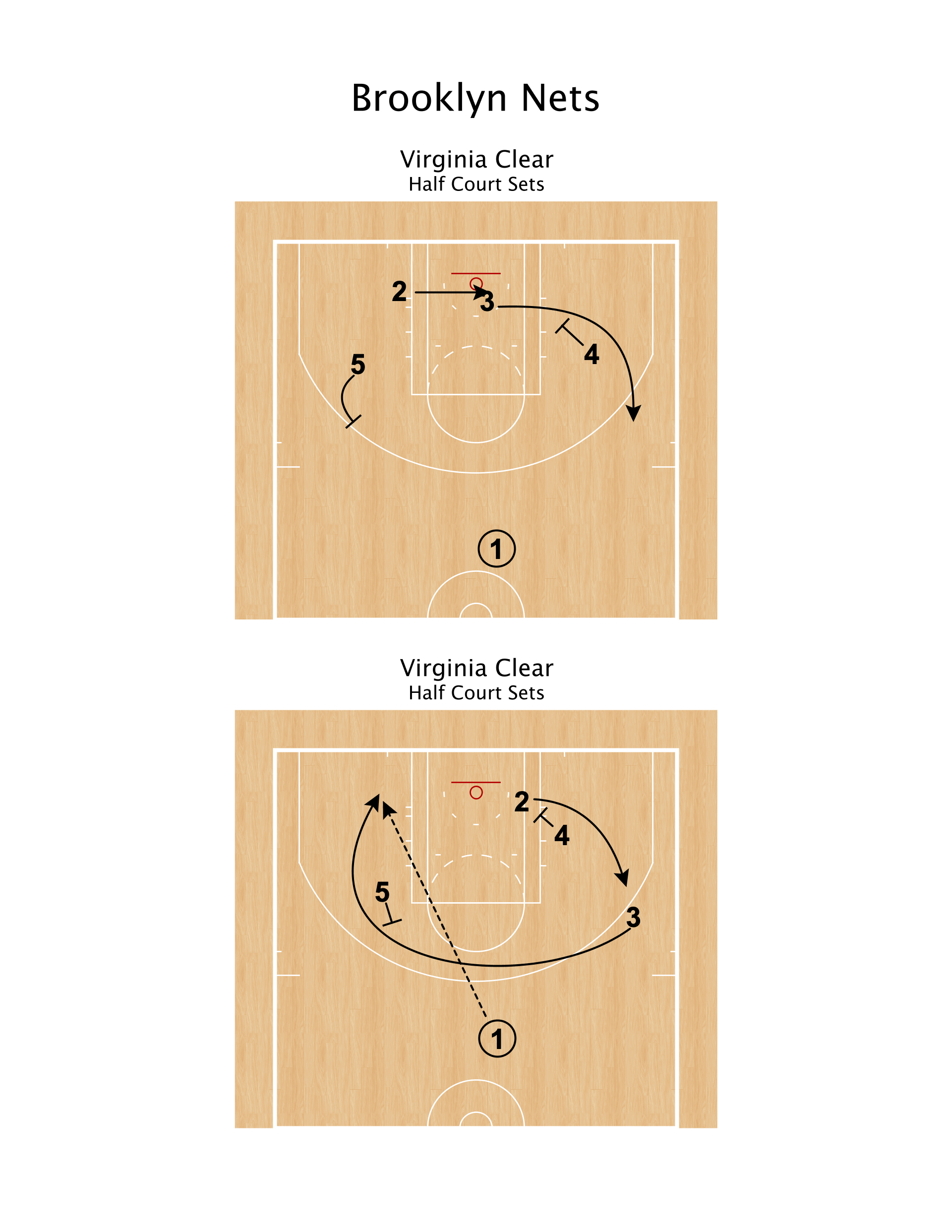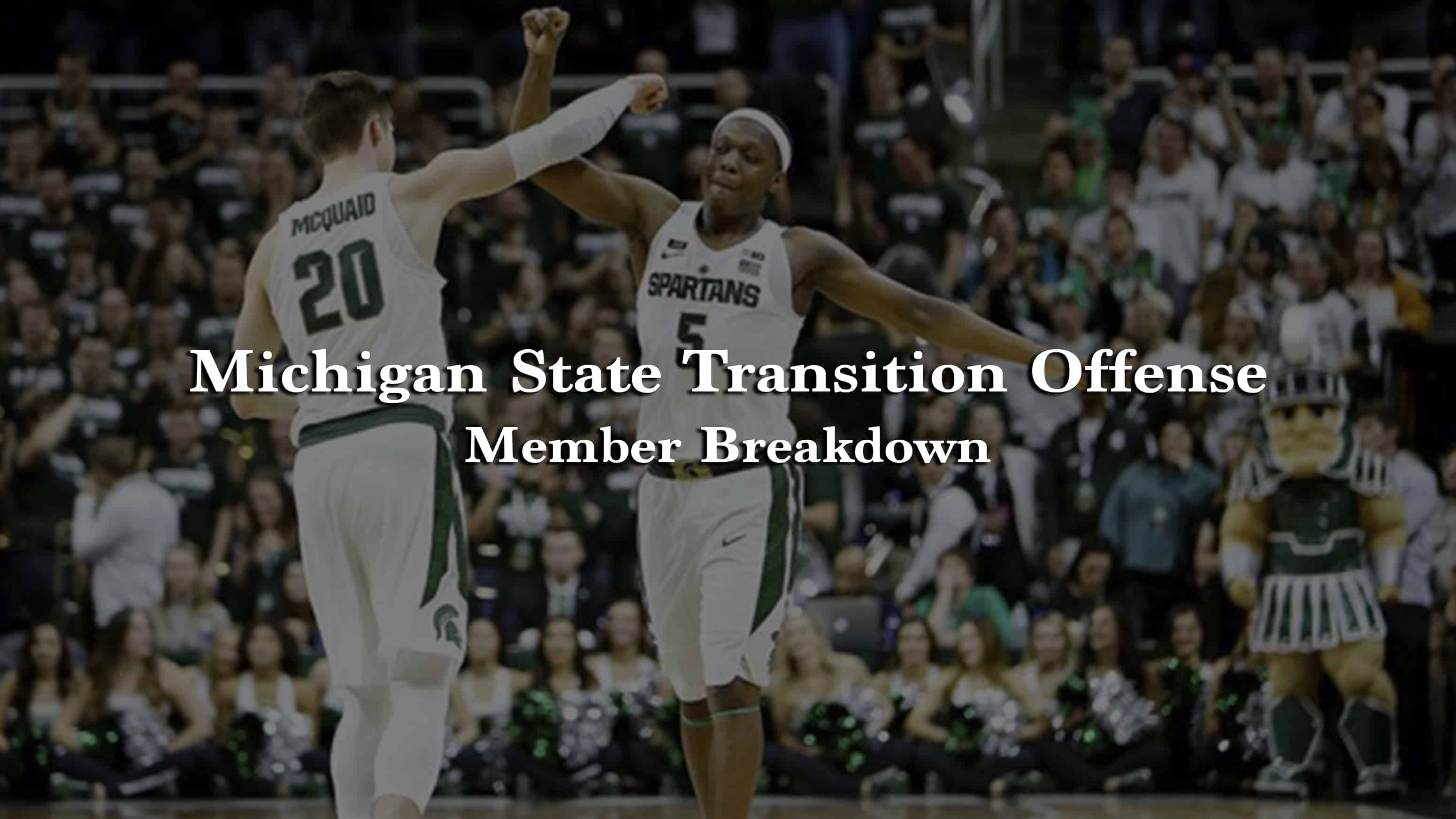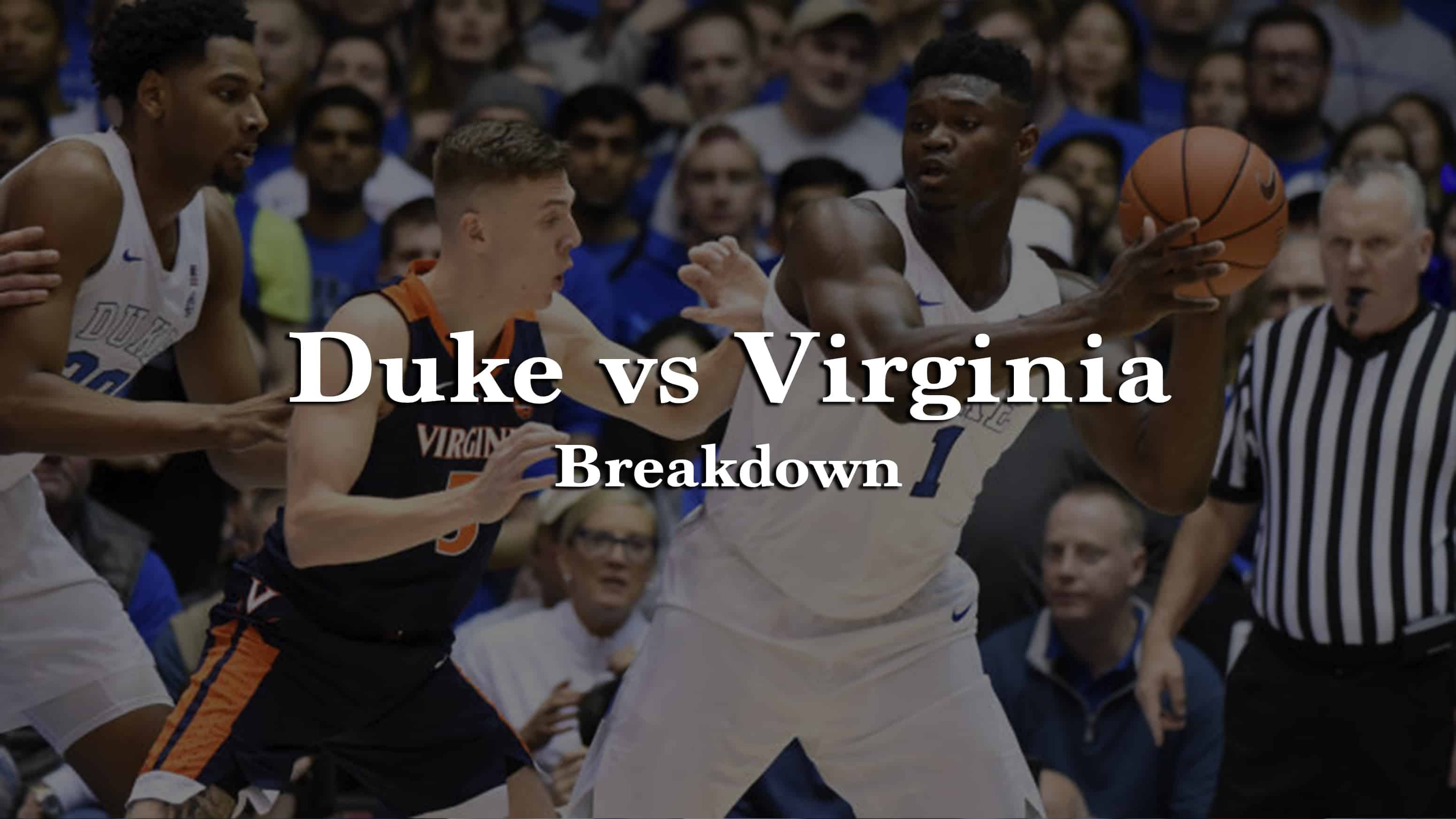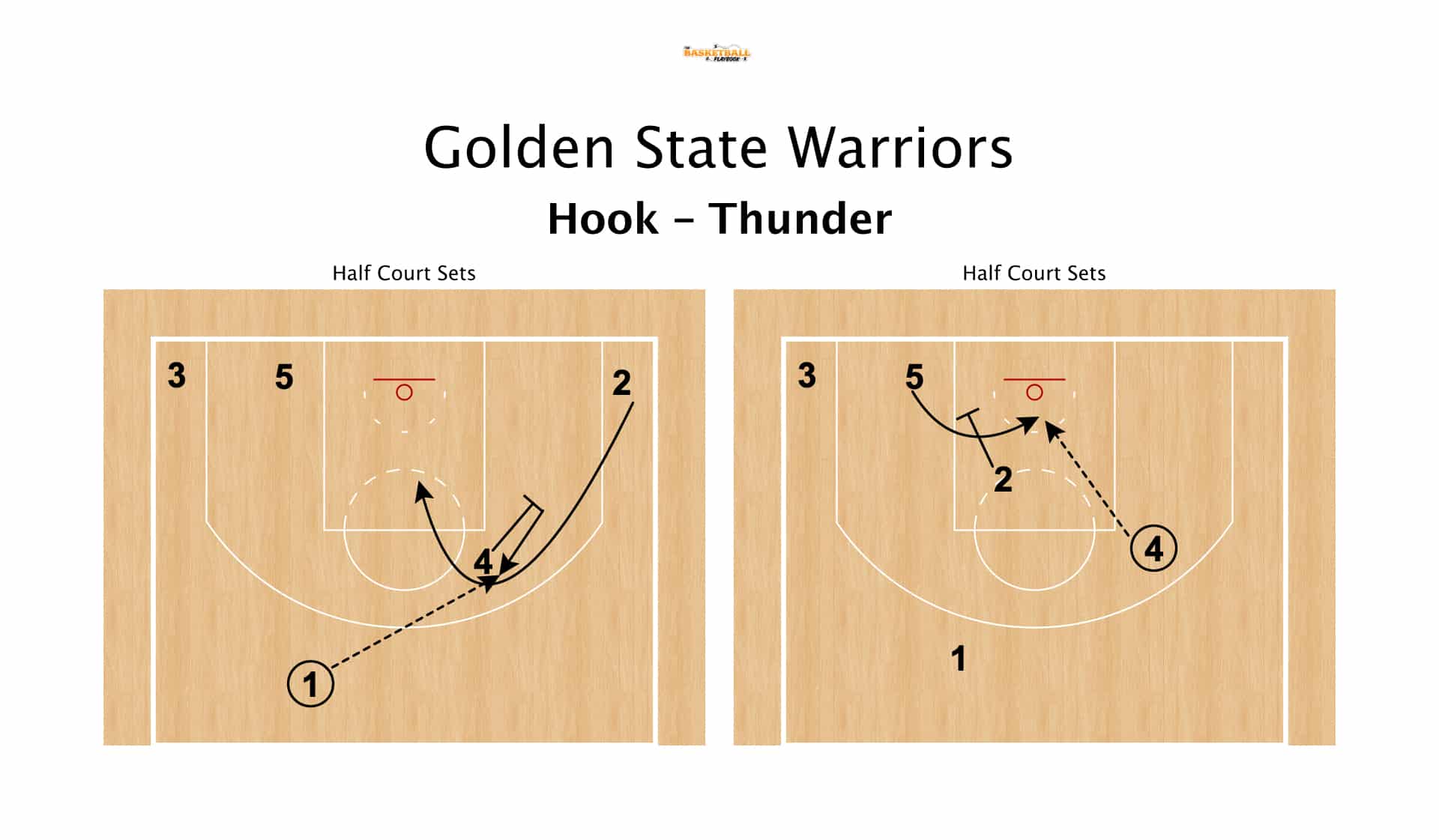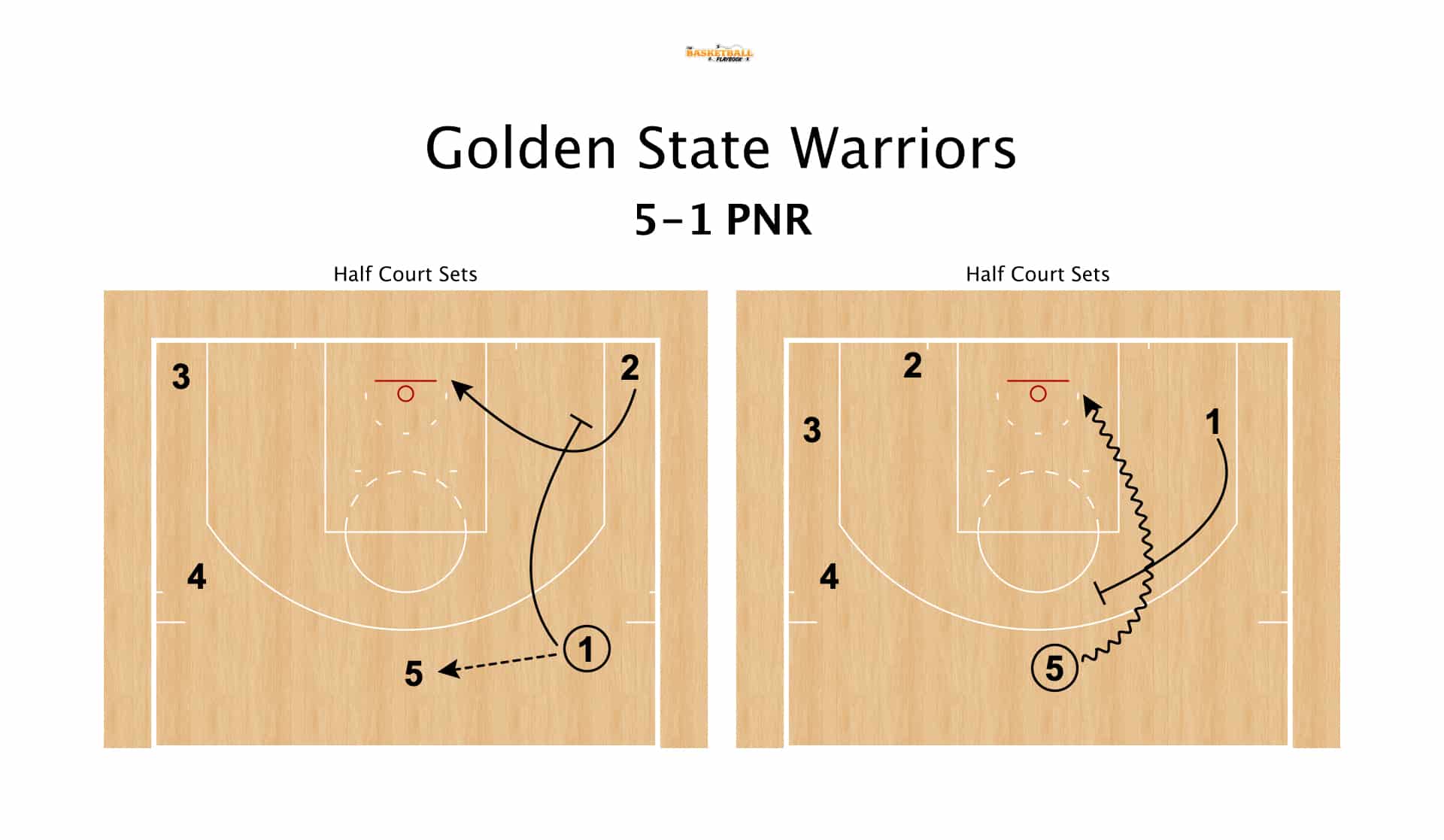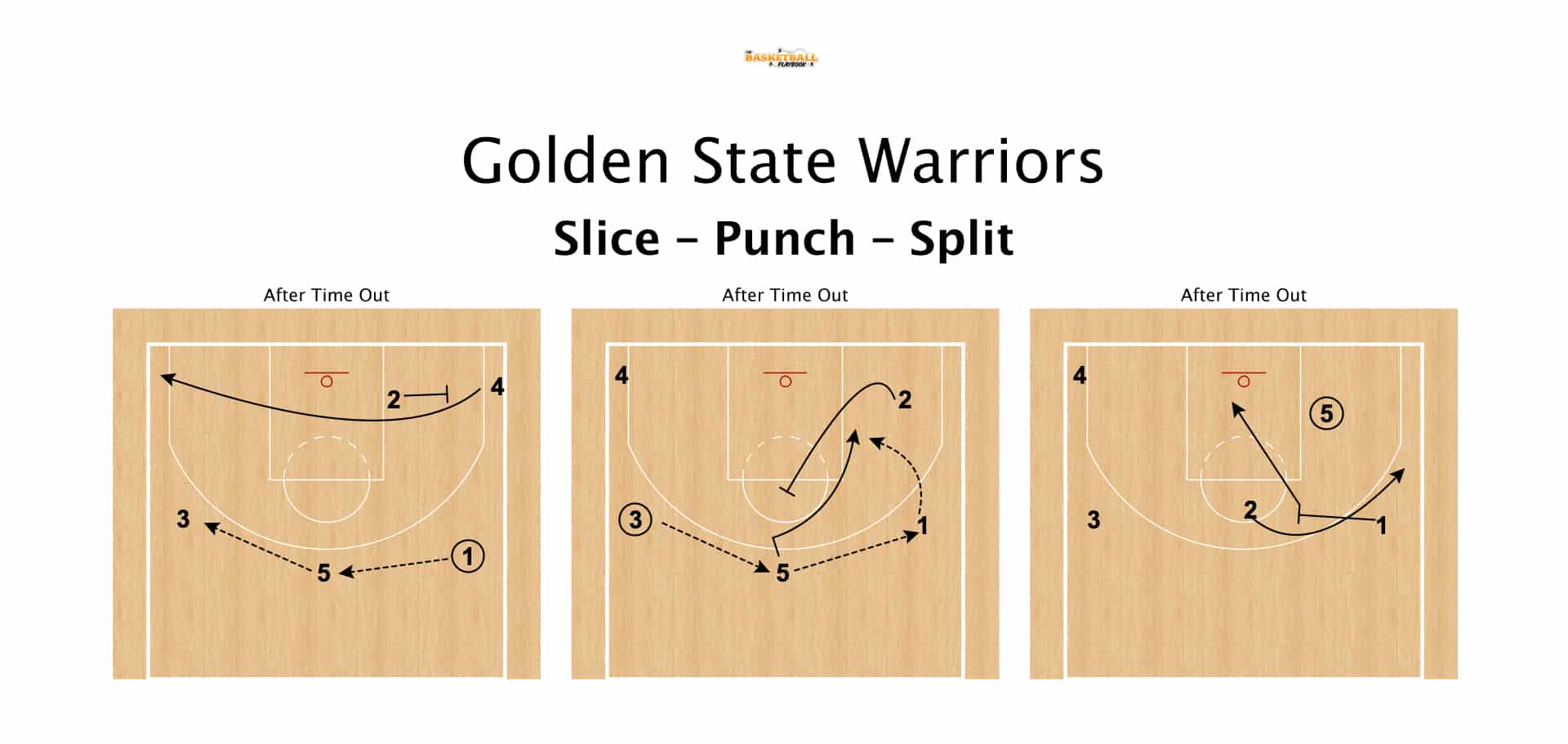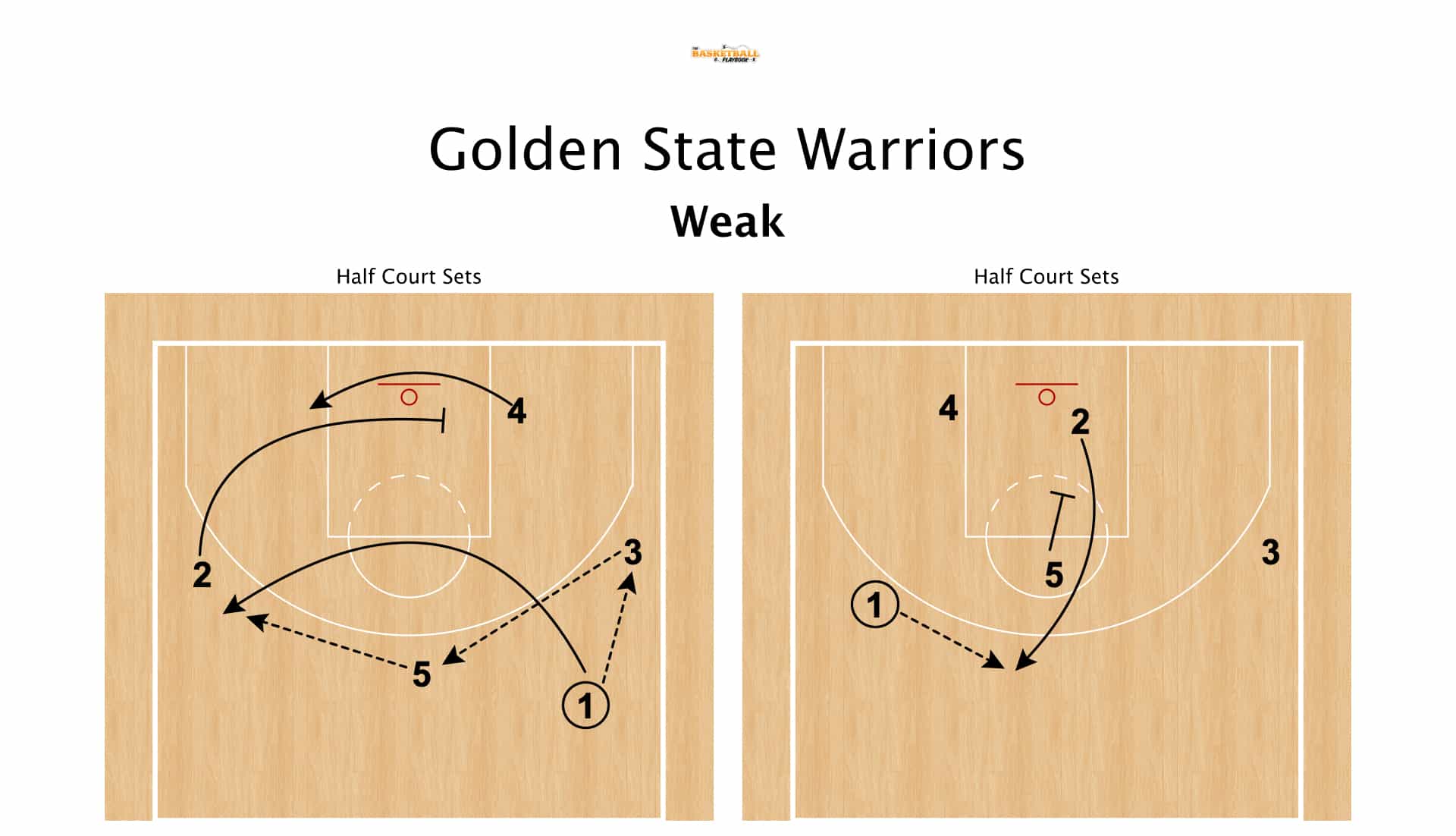Atlanta Hawks Triple Ballscreen
One of my favorite sets from this year comes from the Atlanta Hawks. It is creative, however it is not a new set by any means. I first saw this from 6 years ago when Mike Prada broke down this play in this great article.
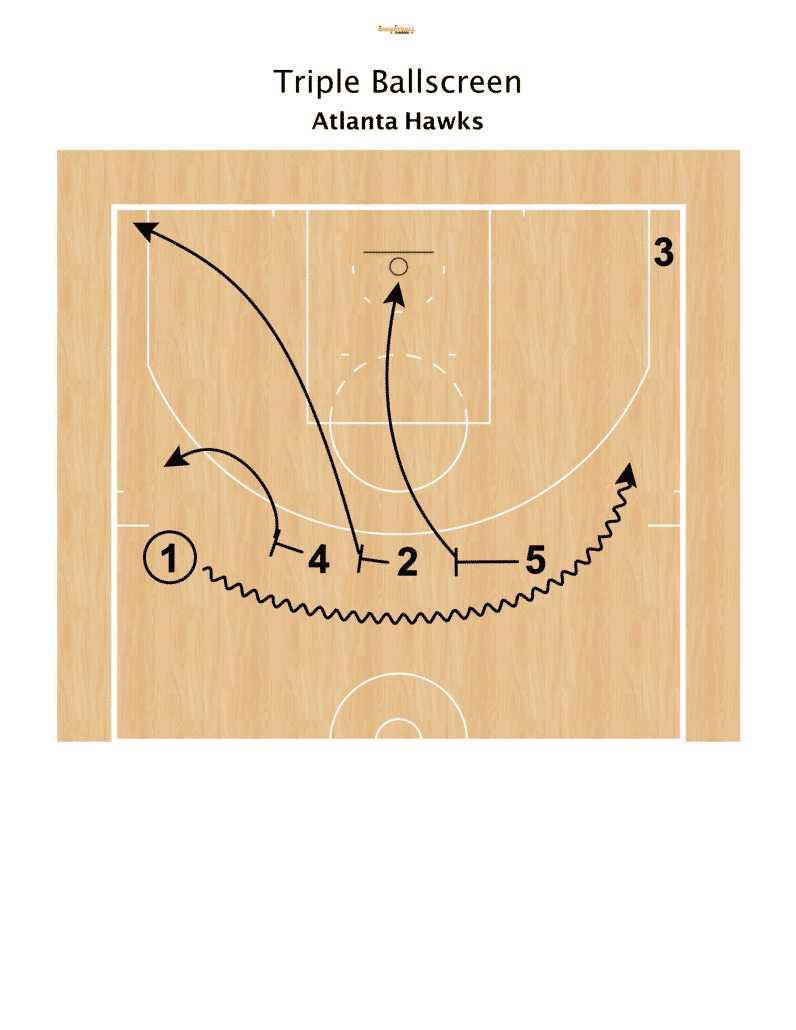
The play is not complex, but difficult to guard. When the play starts the point guard – typically Trae Young – comes off of the ballscreen set by 4/2/5. As the guard attacks off of this, 2 typically slips and sprints to the corner causing some confusion.
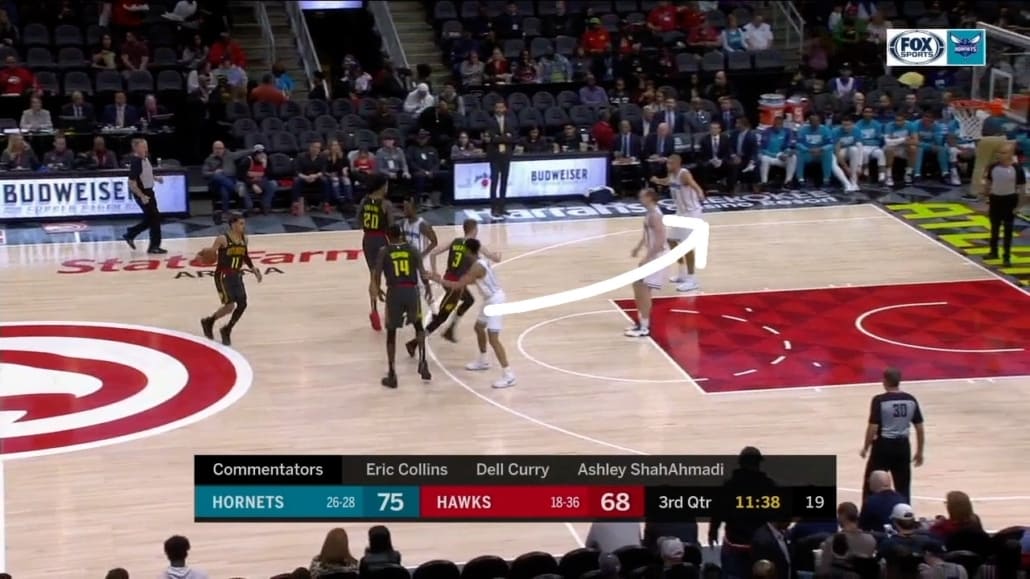
After the guard dives to the corner, this basically turns into a spread ballscreen and allows the point guard to make an easier read against the defense. Defending this set gets tricky, depending on the team defending it. We will look at how the 76ers tried two different ways and both ended up not working.
In the first clip above we can see how the 76ers were slightly confused but ended up hedging against it with Redick and Butler. Initially the hedge worked but as Collins rolls both Butler and Redick go with the roller allowing Trae Young to make an open 3 point shot (a deep 3!). The next possession later in the same game the 76ers do a great job defending it with Embiid dropping and forcing a 2-man game and another attack after. As Young comes off the hand off Embiid has to jump switch and guard Trae Young in space. Trae Young tries to give it up and get it back but Embiid denies the pass. As Embiid denies Young, this opens up a driving lane for Prince to drive to the rim with no rim protection.
Here are a couple more examples of a triple ballscreen by the 2012 Knicks.
This set is not exclusive to the NBA, one of my favorite college coaches LeVelle Moton runs this with his team at North Carolina Central.
A quick hitter counter that Scott Brooks ran initially with the Thunder and now with the Wizards is a triple ballscreen with a “Ricky” or a rescreen for both Kevin Durant as well as Bradley Beal.
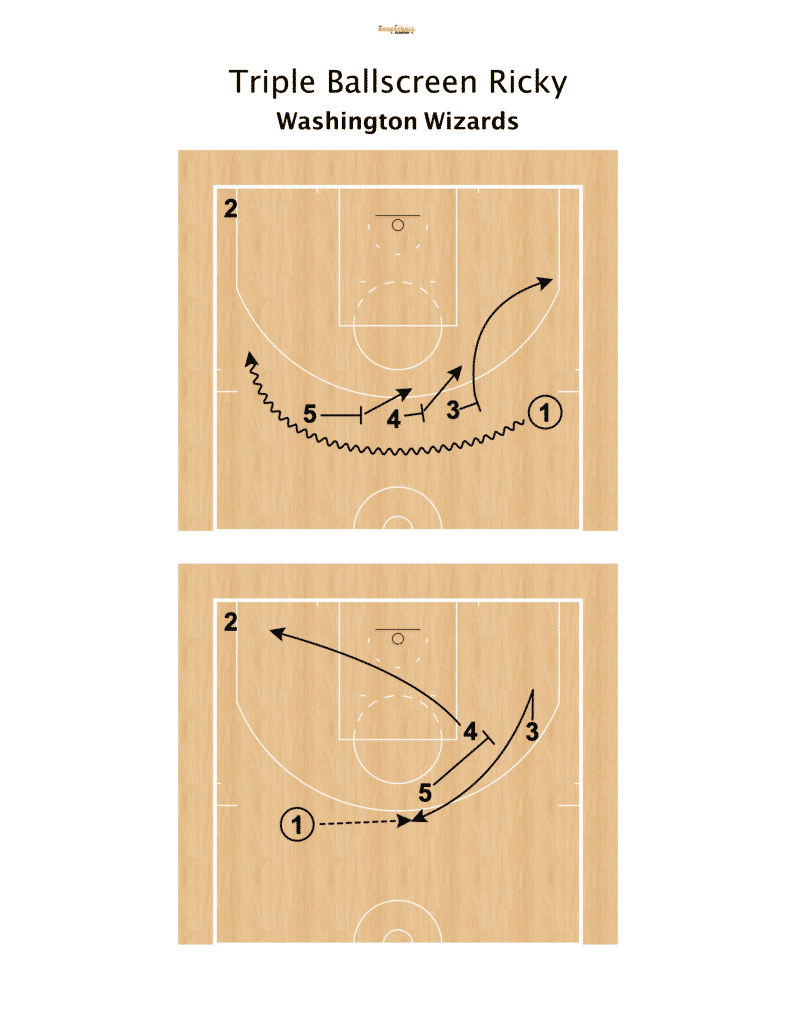
The triple ballscreen is one of my favorite plays, and something that I have actually run at the high school level after time outs. I think that this creativity is really cool to see and see how other coaches steal from each other and create new plays from different original concepts.
Coach Pyper
2019 NCAA Tournament Best Sets
The 2019 NCAA Tournament was one of the most memorable tournaments, with Virginia capturing the title after being the first one seed to lose to a 16 seed the year before. It is only fair that Virginia has my favorite set from the tournament with their elevator decoy set that was so impressive. In this breakdown, we will look at my favorite sets from the 2019 NCAA Tournament, just from what I watched and remembered. There will be sets that I miss, and concepts that you might like and enjoy more – please let me know what I missed! I watch a ton of basketball so I might have overlooked something and would love to include any that I missed in a future update or video breakdown.
2019 NCAA Tournament Best Sets
Virginia Elevator Decoy
By far my favorite and most popular set from this years 2019 NCAA Tournament comes from the champions, Virginia. Virginia ran a gorgeous set that looked like the normal Elevator set they run for Kyle Guy – which Auburn was clearly ready for. Auburn stopped the initial elevator action but this was just a decoy that set up a throwback screen for Jerome for a wide open 3. I love this action but the biggest lesson for me was how to combine two actions and run the one action over and over again and then hit the defense with a surprise counter out of a normal action you already run!
Belmont Backdoor Set
Belmont’s Rick Byrd is one of the best coaches to ever coach the game and he will be missed since he announced his retirement. In my opinion he is the king of the backdoor set and that was clear with my biggest tweet of all time breaking down his “Panic Backdoor” set. Belmont ran a similar backdoor look but it is a little more basic with simple movement but still very effective. One of the keys in this backdoor set is the trigger which is the ball fake that sets up the backdoor for a layup. Another thought I have when looking at film like this is what triggers or signals can I include in my offense that is easy to teach and an automatic.
Ohio State Stagger Back
Chris Holtmann has been a favorite watch of mine since his days at Butler and his playbook is really good. My favorite set from him came out of a 5-out formation to a stagger throwback. The key to this set is to have the player coming off of the throwback screen starts low so his man is the help defender and it is a choice to chase his man or help the drive. This is a great lesson for all coaches – what are you doing offensively to ensure the defense has a choice to make in your flow or your sets?
Virginia Tech Ghost
So much action and movement before a final “Ghost” screen (shoutout to Zak Boisvert for the name!). The set basically has 2-3 actions with hand offs and curls into a spread ballscreen but this is all decoy action. After the initial action happens the main look flows into a ghost screen angled toward half court for a pick and pop.
Wofford (& Others) Zone Reverse Fill
The most common NCAA Tournament set is a zone set that is a ballscreen with 2 players filling behind to create a 2 on 1 against a 2-3 zone. Wofford runs this action really well and the set is designed to get a side ballscreen against the zone, which is one of my favorite actions against any Zone Defense. As the ballscreen occurs two players fill on the wing behind the ballscreen creating a 2 on 1 situation and allows the players to either catch and shoot or make an extra pass. This is one of the best actions against a zone and something all coaches can apply in their zone offense.
If you want more NCAA Tournament X’s & O’s the 2019 NCAA Tournament Playbook with over 850 sets & video playbooks for each team is available here:
If you enjoyed this breakdown or want more X’s & O’s, I have a new weekly breakdown that arrives in your inbox every Saturday morning!
Enjoy & have a great week!
Coach Pyper
Breakdown: Denver Nuggets “21 Nash” After Time Out Set
Denver Nuggets “21 Nash”
After time out against the Oklahoma City Thunder the Denver Nuggets ran a ballscreen set to get Plumlee a dunk off single tag action. The set is simple in execution but tough to guard defensively. Jamal Murray passed to Will Barton on the wing and then set a double ballscreen with Plumlee for Barton on the wing. At the same time on the weakside Malik Beasley set a pindown screen for Jokic to pull Steven Adams away from the rim. The read after this is simple, whatever Jamal Murray’s defender does you pass to the opposite – if he helps on Plumlee then you pass to Murray for a 3 or if he stays on Murray then you hit Plumlee on the lob.
Houston Rockets “21 Nash”
Seattle Storm “21 Nash”
-Coach Pyper
Sets Breakdown: Charlotte Hornets vs Brooklyn Nets
The Brooklyn Nets beat the Charlotte Hornets behind DeAngelo Russel’s 40 point game, including scoring the last 12 points. We will look at my favorite sets and lessons from this game, with the video and the diagram breakdown.
Charlotte Hornets “Chin Screen the Screener”
The Hornets run this Chin action often as a basic ballscreen set for Kemba Walker and Tony Parker. Setting up with a pindown for the guard who will come off the ballscreen, the point guard passes to him on the wing. After the pass the big at the elbow will set a backscreen for the point guard, then chase into a ballscreen for the guard on the wing. As the ballscreen happens the point guard will then set a cross screen for the opposite block and then come off a downscreen toward the top of the key.
Charlotte Hornets “Horns Twist”
Perhaps the most common set in the NBA, this is a set out of the Horns formation that is a designed ballscreen set. The point guard comes off the first big at the elbow who sets a ballscreen then clears opposite, sometimes with a flare screen. Opposite of this ballscreen the big chases into a ballscreen for the point guard and rolls to the rim, creating “Shale” or “Single Tag” action.
Charlotte Hornets Rim Run – Draws 2
One of the simplest things in basketball to do is to sprint. Most players and teams don’t do it enough especially at the NBA level, but here we can see how this can impact the game. Cody Zeller sprints down the middle of the floor to the opposite basket and doing this draws in DeAngelo Rusell, leaving Batum open on the wing for a shot.
Brooklyn Nets Opening Set “Leak”
Opening up the game with this “Leak” set, designed to get Joe Harris an open shot. The set starts off with a pindown for Lavert to catch the ball at the top of the key then Joe Harris and Graham set a double flare screen for DeAngelo Russell. As the double flare screen occurs, Joe Harris sprints and leaks out to run off an opposite screen from Jarrett Allen for a shot. Great design after time out from Kenny Atkinson.
Brooklyn Nets “Fist Up Split Knicks”
Another great after time out from Atkinson, this is a common action they run after a time out with a little wrinkle. The set starts off normally with a ballscreen slip and a pass from the point guard to the big who pops. After the pass to the big, the big goes into a dribble hand off on the wing and then normally a pass back to the point guard for a ballscreen. In this set Russell will set and slip a pindown screen for Napier who then catches it for a step up screen.
Brooklyn Nets “Virginia Clear”
This action is straight out of the Mover Blocker playbook – hence the name Virginia in the title. After a down screen the guard will continue opposite off a flare screen toward the basket looking for a lob or layup, with an opposite pindown. If no option is open, it flows into a high ballscreen.
I hope you guys enjoyed this breakdown, I will have more to come!
-Coach Pyper
Breakdown: Milwaukee Bucks vs Boston Celtics
The Bucks and Celtics faced off after the All Star break, and the game was a great example of how defense can remain even though both teams were pretty rusty. I really likes what the Bucks tried to do against Kyrie and Horford, but the Celtics defense vs Giannis really stood out to me. In this breakdown we will look at the last 3 minutes, thoughts on both teams execution as well as playcalls, sets and skills from this game.
Bucks Offense
The Milwaukee Bucks run a 5-Out offense with Giannis attacking at the center of it. One of the biggest keys that allowed them to win this game was their defense fueling their offense and allowing Giannis to get out in transition. The Celtics tried to defend the 3 point line, but the Bucks spacing allowed for them to counter with multiple drives to score layups.
Bucks Defense
One of the most interesting things I took away from this game was the Bucks Drop coverage in the pick and roll and dribble hand offs. When the Celtics go to any ballscreen the bigs of the Bucks will drop into the lane and only allow mid range jumpers – at the same time the guards defending the ballscreen will trail and force the ball into that mid range area. The Celtics hurt them by popping Horford, Morris and allowing them to either shoot open jump shots or attack off the dribble. Going forward it will interesting to see if they do the same thing if the time comes into the playoffs.
Celtics Defense
When playing the Bucks the number one objective should be to slow down Giannis in transition, and I LOVED how the Celtics really loaded to the ball and shrunk the floor by showing their hands and making the floor seem smaller.
Horford and Smart are the two key players in the Celtics defense, and they really make it work because of their effort and intelligence. I love Marcus Smart and how he give 100% effort every play and the ability to know when to attack and when not to, and Horford really unlocks their ability to switch and be able to prevent some of the 3’s the Bucks normally get.
Celtics Offense
The Celtics offense looked much better in terms of movement, sharing the ball, and the ability to get others involved. Attacking the Bucks drop coverage with Horford pick and pops was key, but also Kyrie really struggled to make them pay for it when they allowed him to take a mid range jumper. Although Kyrie struggled he really came up down the stretch run with big, timely shots. I expect Boston to rattle off a couple of big games with the way their offense flowed and was able to look really good at times.
Below are some of my favorite sets from the game, as well as playcalls and skills I took away when watching this game.
Sets & Specials
Playcalls
Skills
Hope you guys enjoyed this breakdown, I look forward to doing more.
You can find me on social media:
Twitter: Half Court Hoops
YouTube: Half Court Hoops
Instagram: TheBasketballPlaybook
Patreon: patreon.com/HalfCourtHoops
Enjoy!
Coach Pyper
Breakdown: Duke vs Virginia Preview
Duke and Virginia square off again this Saturday, and the matchup is bigger than ever. Arguably the ACC regular season championship game, with Virginia’s lone loss coming at the hands of the Blue Devils. I broke down 3 main things for both Duke and Virginia with sets and schemes they had in the last matchup. The biggest questions are what Duke will do defensively and how Virginia will counter it, with the focus on Tre Jones impact when he returns on the defensive side of the ball. I did a breakdown podcast with Jordan Sperber that went deep into the X’s & O’s and decisions that can be made and tweaked for the rematch which you can find here: Duke vs Virginia Preview Podcast.
Duke Switching Defense
Duke switched a lot in the matchup vs Virginia, primarily looking to take them out of their Mover Blocker actions that is the primary offense Virginia runs. I have not found any examples from earlier this season where a team switched as much as Duke did, even going 1-5 switching every single action that Virginia ran. When Duke switched it really forced Virginia to play in Isolation and create 1 on 1, which is not a strength and what makes Virginia an elite offense.
Duke 2-3 Zone
Going to a 2-3 zone is something that Duke has done periodically this year, but they ran it as a primary defense last year. Coach K learned the ins and outs from Boeheim during their time coaching the USA national team, so it is always something Duke can fall back on when things are static or struggling to guard a team. Duke has SO much length and athleticism I think its something that they will run randomly throughout the game to use a change of pace and keep Virginia guessing.
Duke “Horns 4” Elbow ISO for Zion Williamson
Coach K does not run a complex offense at Duke, unlike past years when he ran a deep motion offense, this year they run basic 4-Out and let their players make plays. Duke primarily runs Horns sets when they do run plays, and one of them is getting Zion at the elbow and letting him work in Isolation. This play is difficult to handle because it is almost in the middle of the floor so even if you influence one way or the other it opens up driving lanes.
Virginia Switching Attack
Virginia went away from their normal Mover Blocker offense to run their “European Ballscreen Motion” more since Duke was switching everything. When they ran this ballscreen motion, they were able to cause some problems and attacked Duke’s switching easier. The reason this works so well to attack the switch is because the floor is spaced and basically 5 out at times, so the paint is open for slips.
Virginia End of Game Elevator
Tony Bennett has really good X’s & O’s, although many people do not like them because they are deliberate and play at a slow pace. One of the things you will notice is after a timeout or end of games he has good quick hitting actions ranging from Hammer/Throwback plays as well as Elevator plays. Here is a good elevator play run for Kyle Guy at the end of the game when Virginia needed a score.
This game is exciting, especially with the rematch at Virginia and there are layers that involve coaching on both sides of the ball. Stopping a forceful team like Duke is a tall task and Virginia is an elite defense, as well as how they will attack Duke’s switching defense. Ultimately I feel like Virignia will play well and come out strong, but Zion and RJ are too much for them in the end.
-Coach Pyper
Breakdown: Golden State Warriors Sets For Demarcus Cousins
Boogie Cousins is back. It is scary, he looks really good for coming off an Achilles injury – although playing for the Warriors probably has something to do with it. The Warriors are running sets for him to get paint touches and let him handle the ball, we will look at how they are using him in their offense and why it is bad news for the rest of the NBA.
Early Push
As the season goes along and Boogie becomes more comfortable I expect him to push the ball after rebounds it on the defensive end. Draymond is great at rebounding and starting the break, and I think Demarcus Cousins will eventually start to push the ball more and look for early attacks, handoffs and screens.
Hook Thunder
This is a set the Warriors used to run for David West & Andrew Bogut – so it makes sense they will run it for Boogie as well. Starting off with a wide pindown for usually Steph or Klay (most of the time it is Klay) who then curls inside toward the paint, and the screener opens up at the elbow for a pass – this is “Hook” action. After the pass is made to the elbow, Klay will continue into the paint opposite and set a pindown screen for Demarcus Cousins to flash in the middle for a score or a deep paint touch. This is difficult to guard since the switch really isn’t plausible in the middle of the floor, and it is set so deep that Demarcus Cousins can get a deep paint touch.
52 Get – Inverted Ballscreen
An action rather than a set, this could be potentially be a nightmare for opponents since they will use Steph and Klay as ballscreeners with Demarcus Cousins handling the ball. Since I expect him to be more comfortable bringing the ball up this makes more sense having Klay and Steph setting random ballscreens especially when denied.
Slice Punch
A set the Warriors are running for Demarcus Cousins is a slice screen into a post up. Most of the sets the Warriors will run for him will be sets they already used before for their bigs, and using Steph and Klay as screeners will not allow a team to switch the screen. This set is a ball reversal into a slice screen for Demarcus Cousins post up. I have included the video they ran for Andrew Bogut – this action starting in the 2015 playoffs, primarily looking for split cut actions off of it.
Motion Weak
A set that has been run by every team at almost every level is “Motion Weak” by the San Antonio Spurs. After the point guard passes to the wing he will cut through the lane to the opposite wing, and the ball gets reversed to him. During the point guard cutting through, the opposite wing will dive into the lane and set a cross screen for Demarcus Cousins to post up off of.
Split Cuts
This is by far the scariest thing about the Warriors adding Boogie Cousins. I understand the post ups, spacing and play creating that he allows, but running a post up with their center on the perimeter and executing split cuts is just stupid. Stupid in the way that makes no sense from a defensive standpoint and since it is random, incredibly hard to scout. Either running off a screen or slipping to the basket or even into the post after screening on the perimeter is one of the hardest things to guard.
Early Punch
One of my favorite actions that involves Demarcus Cousins is how he will sprint up the floor and bury his man in the post. Looking to seal in the post and then get the ball on the block puts early pressure on the defense, then flowing into split cuts and actions off of it.
Not a ton of new stuff for Demarcus Cousins, but simply plugging him into their old sets makes them so lethal and hard to guard. Once he gets into the flow of their offensive schemes, adding new actions and sets are going to make the Warriors basically impossible to guard. I hope you enjoyed this breakdown, and if you have any feedback or questions let me know!
-Coach Pyper

